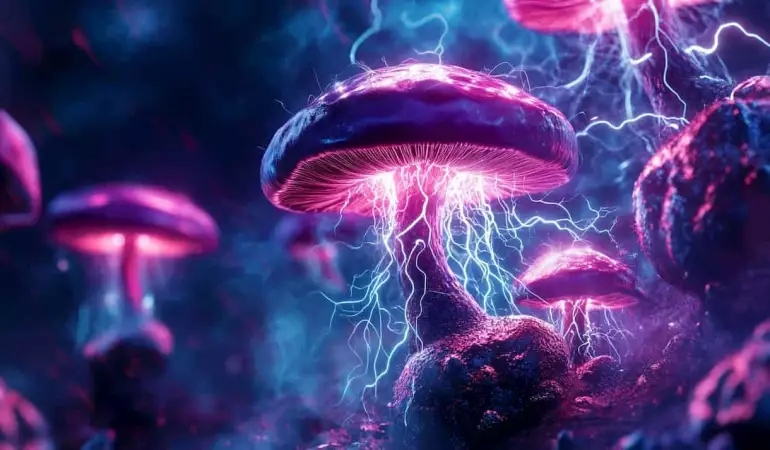Atypical discovery: scientists teach mushrooms to generate electricity
Yeast and white rot fungi can play a small but ingenious role in switching to the electricity produced by fungi.
January 15, 2025 18:42
An environmentally friendly solution
Swiss scientists have reported a remarkable discovery: mushrooms can be used as the basis for batteries.
The mushroom battery they have developed is produced using advanced technology - 3D printers that incorporate mushroom cells into the printing ink.
These batteries have the important advantage of being biodegradable. Once they have completed their function, these batteries decompose internally without harming the environment.
The discovery of the Schweircars further extends the applications of mushrooms. Fungi are already being used to create sustainable clothing, building materials and even meat alternatives.
Here's how a mushroom battery developed at the Swiss Federal Laboratories for Materials Science and Technology (EMPA) generates electricity:
This is the first such achievement
EMPA researchers have discovered that this battery is a microbial fuel cell.
Micro-organisms, like all living things, convert nutrients into energy. Microbial fuel cells take advantage of this metabolism and convert some of the energy produced into electricity.
"For the first time, we have created a working fuel cell by combining two types of fungi," said EMPA researcher Carolina Reyes.
The anodic (negative) side of the battery uses a yeast fungus, which releases electrons during its metabolism. Meanwhile, on the cathode (positive) side, a white-rot fungus produces a special enzyme that allows electrons to be 'captured' and transferred outside the cell.

These fungi feed on simple sugars that are added to the battery components.
"The mushroom batteries can be kept dry and activated only when needed - just by adding water and nutrients," explains Mr Reyes.
How are mushroom batteries made?
The mushroom battery is 3D printed to adapt its electrode structure to allow micro-organisms to easily access nutrients. The mushroom cells are added directly to the printing ink.
"Finding a material in which fungi can grow well is not easy. In addition, the ink has to be electrically conductive, biodegradable and not damage the cells during printing," explained Gustav Nyström, Head of EMPA's Cellulose and Wood Materials Laboratory.
EMPA researchers have succeeded in developing a suitable cellulose-based ink. The cellulose not only supports the growth of fungi, but also serves as an additional nutrient to help the battery to degrade naturally after use.
The future of mushroom batteries
Mushroom batteries generate little electricity so far, so their use remains limited.
However, they are sufficient to power a temperature sensor for several days, for example in agriculture or remote research facilities.
According to the EMPA researchers, fungi are still not fully explored in materials science.
Researchers will now work to develop more powerful and longer-lasting batteries and investigate the potential of new mushroom species to generate electricity.




